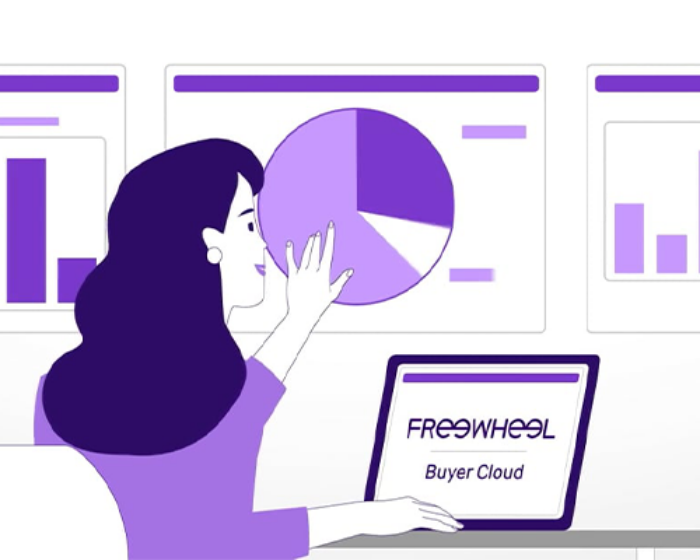During this year’s IAB Annual Leadership Meeting, former Yankee Alex Rodriguez made a “friendly bet” that, “In the next 5 years you’ll see a Super Bowl on Netflix.” Despite which streaming platform potentially secures the sole rights, Fox did air the big game on February 12 across both broadcast and streaming assets, so, it begs the question for marketers: with OTT as an increasingly heavy presence in even the most high-profile television events of the year, should connected TV (CTV) advertising be bought like linear or digital?
Some marketing optimists will argue that all video should be treated the same, regardless of device or context. This would indicate that CTV has finally given us the tools to live in a video marketing utopia where reach, frequency, and results can be targeted and measured in a completely agnostic way, regardless of where a viewer wants to consume content. While there’s efficacy to this view, as video consumption is more converged than ever, context does matter and thus the result of that impression will differ greatly by how the content is consumed. Not to mention, no single platform can seamlessly align digital and linear in a purely deterministic manner, so any attempt to do so will result in some amount of modeling and probabilistic guesswork to tie together impressions where user data isn’t available to track delivery in real-time across channels.
Consider the overall advertising goals.
When it comes to the question of whether to buy CTV like digital or linear, the ideal method of buying really depends on the overall advertising goals and what the buyer is looking to achieve with their campaign.
Marketers looking for direct response performance would likely see the best results when tying CTV to digital tactics so that the advertiser can optimize for efficient performance-based outcomes. Conversely, if a client is launching a brand campaign, especially if that brand is already running a lot of linear television, aligning CTV with a traditional TV schedule will offer the greatest impact from a reach and frequency standpoint, especially if they can use data that helps them align viewership metrics across channels.
Let’s unpack below.
Use a digital approach when the campaign goals are performance-based.
For digital buyers accustomed to achieving efficient ROI outcomes, buying CTV should look like buying video on native digital devices. CTV has some key advantages:
- The format is larger and thus a single impression is more likely to have a higher impact and reach multiple people within the household.
- With tactics such as person-level or household-level targeting, site and app retargeting, and behavioral targeting campaigns can be extended to CTV and frequency caps can be set across multiple inventory types.
- Brands can also use lift studies and features such as “ghost bidding,” a tactic for A/B testing that enables an advertiser to build a statistically significant control group to test performance lift at zero cost, to test whether CTV improves factors like number of attributed sales, conversion rate, and overall effective cost per acquisition (eCPA). Over time, advertisers can use the optimization tools at their disposal in their platform of choice to customize media plans for the best results.
The major drawback to buying CTV versus digital devices is that most desired direct response actions, such as a sale, can’t take place on that specific device since users usually can’t “click” through and buy a product on their television. Still, with effective household-level targeting and attribution, digital performance buyers can successfully leverage CTV to increase sales with high conversion rates that often back out to a strong household level eCPA, despite the higher CPMs of premium placements on large-format TV screens.
Use a linear TV approach when the campaign goals are reach based.
Brand buyers may want to better align CTV with a traditional TV schedule or other branding-first mediums. For buyers who have historically bought a significant amount of broadcast, this gives them an avenue to both ensure contextual alignment and incremental reach with their traditional linear schedule, while also granting more granular reporting and measurement for engagement metrics, such as completion rate and brand lift. For buyers adding digital to their linear buys, digital contextual signals and broadcast ad exposure data are the most helpful tools for aligning a digital buy to a traditional broadcast schedule, offering the most upside for campaigns looking to outperform on traditional brand metrics such as incremental reach, digital extension, conquesting, and others.
While no platform has seamlessly found the winning solution of frequency capping and mimicking placements perfectly across CTV and linear, advertisers can leverage demand-side platform technology to frequency cap across digital publisher buys, to avoid over-saturation, and (where available) suppress linear viewership based on frequency. This ensures that CTV spend is incremental to linear and allows brands to extend their TV buys to digital in a seamless manner that is a value-add to their existing campaigns.
Additionally, traditional TV-heavy advertisers can use contextual viewership data to suppress or heavy up against viewers of shows where their linear buys are airing. While the Super Bowl may be years away from being native to streaming, live event-based viewership data can bridge the divide to link brands to consumers who actually watched the big game, regardless of the format where they consumed the content. Because the Super Bowl may be out of reach for the majority of advertisers, viewership data has democratized access to the eyeballs that watched the big game. Savvy buyers who know how to align their tactics to their goals can now find that user-base across any of the content available.
The future of television advertising is happening now.
There is no denying that the TV landscape has fundamentally changed. The convergence of video is already happening, and as the lines of TV continue to blur, it’s imperative that advertisers are able to reach their total TV audience wherever they are consuming content, across linear and CTV. Luckily for advertisers though, we have reached a place where TV can offer both the reach of linear and the performance of digital in one. This means advertisers no longer have to make the choice; Brand buyers and performance-based marketers can now leverage premium TV as a full-funnel solution that can offer both.
Xander Kotsatos is the director of strategic relationships at FreeWheel. He is focused on bringing new and innovative buy-side capabilities to the market through his work on Beeswax. To learn more about the best-in-class buying platform Beeswax, visit here.



